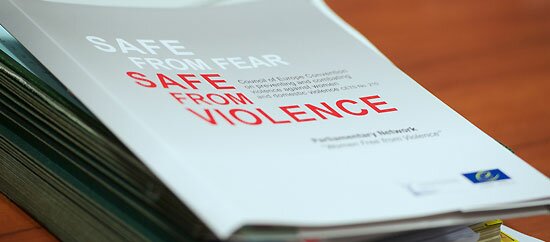




In its 60-plus years of existence, PACE’s role as a “human rights watchdog”, a motor of ideas and a forum for debate has triggered positive change, defused conflict, and helped to steer the continent towards an ever-evolving set of shared values.
Among the Assembly’s most important achievements are:
- Ending the death penalty in Europe by making it an accession condition
- After 1989, helping ex-Communist countries move towards democracy
- Endowing Europe with common symbols: the European flag and anthem
- Inspiring a host of national laws by pressing for new conventions
- A forum for debating controversial social or political issues
- Leading the way on gender balance in Council of Europe bodies
Ending the death penalty in Europe by making it a condition of accession
Since 1989, the Assembly has used its power of veto over new member states to insist that all countries joining the Council of Europe should cease executions and pledge to abolish the death penalty. Today the continent is a “death-penalty-free zone” thanks to the Assembly’s principled stand on one of the most fundamental human rights: the right to life.
After 1989, helping ex-Communist countries move towards democracy
After the dramatic changes of 1989, the Assembly led the way in welcoming former Communist countries into the democratic family of nations. It created “Special Guest” status – a first step towards membership – which allowed parliamentary delegations from these countries to attend and speak at meetings of the Assembly. It was a visionary step, paving the way for the historic reconciliation of European nations, so long divided by the Cold War, “under one roof”.
Endowing Europe with common symbols: the European flag and anthem
It was the Parliamentary Assembly which first adopted the blue flag with a circle of golden stars, and the arrangement of Ludwig van Beethoven’s “Ode to Joy”, as symbols for Europe. Both were later taken up by the European Union and are commonly thought of as EU symbols when in fact they also represent the wider circle of nations that is the Council of Europe.
Inspiring a host of national laws by pressing for new conventions
Around 40 per cent of the Council of Europe’s 200-plus conventions – or multilateral treaties – were inspired by the Assembly, in turn generating a host of new national laws or changes to existing ones. The European Convention on Human Rights is the most well-known of the Conventions, but there have been many others, including recent ones to help national minorities or protect women against domestic violence. PACE can press for improvements as these texts are being drafted, and must be consulted before they enter into force, helping to improve national law and practice across Europe.
A forum for debating controversial social or political issues
The Assembly has sought to hold debates on major social issues dividing Europeans, and seeks to advance the rights of minorities such as the Roma or lesbian and gay people. It has also dealt with painful issues such as the war between Russia and Georgia, or the crimes of Communism. Such high-profile debates over difficult questions have helped to forge Europe-wide consensus or encourage reconciliation.
Leading the way on gender balance in Council of Europe bodies
The Assembly has sought to pioneer gender equality both in its own ranks and on the European Court of Human Rights. It has required parliaments to include at least one woman representative in their national delegation to the Assembly, and insists that at least one of the three candidates for each post as judge on the Court must come from “the under-represented sex”, unless there are exceptional circumstances. As a result, more than a third of the judges on today’s Court are women.
